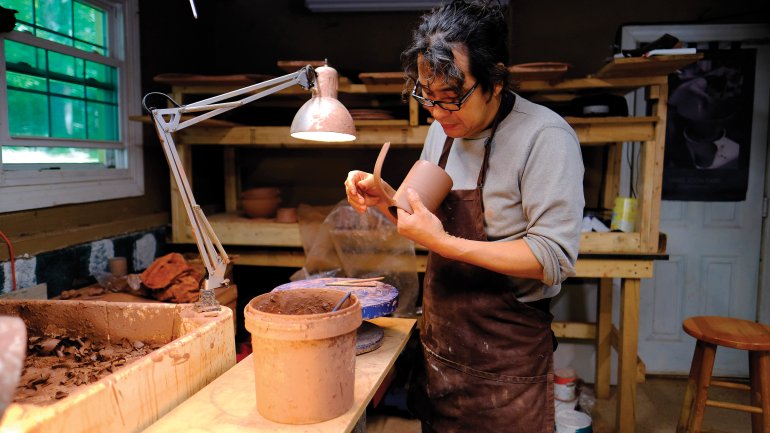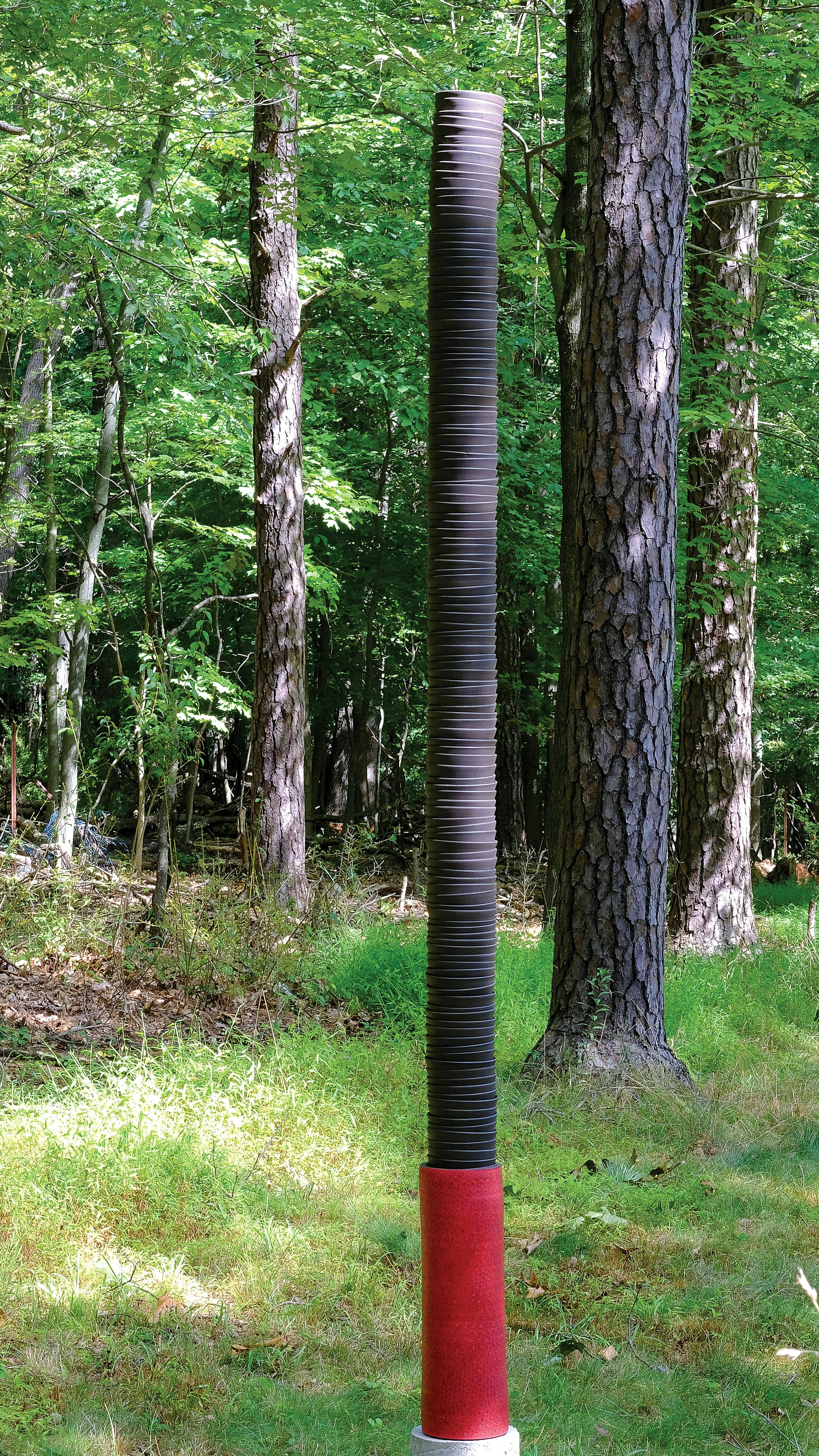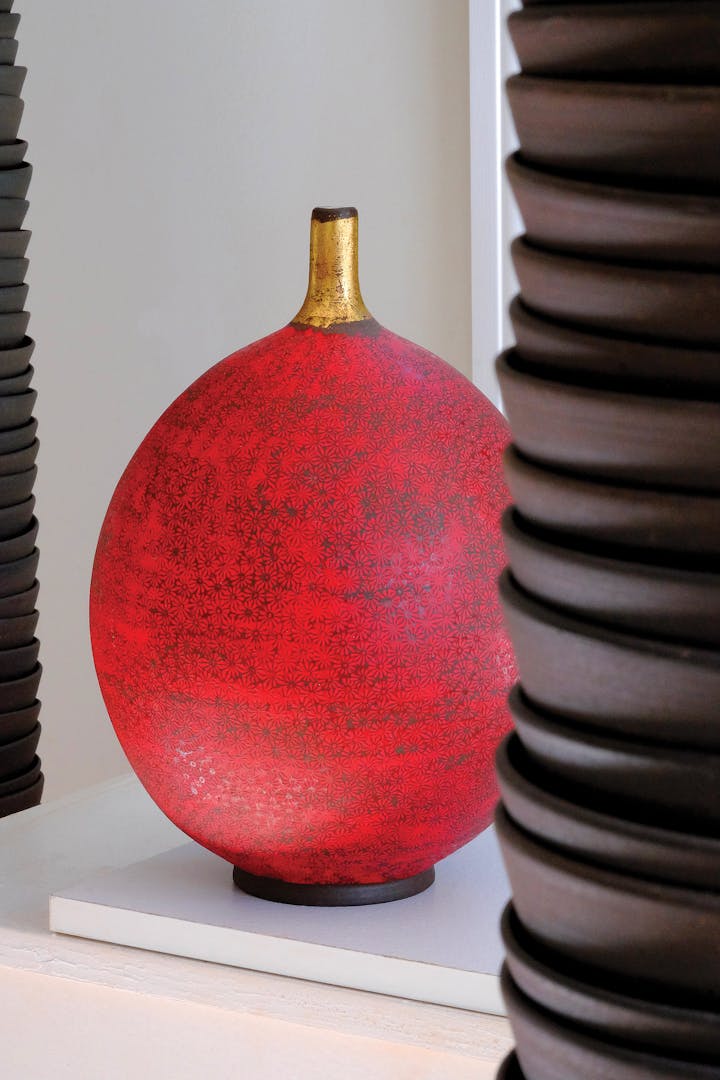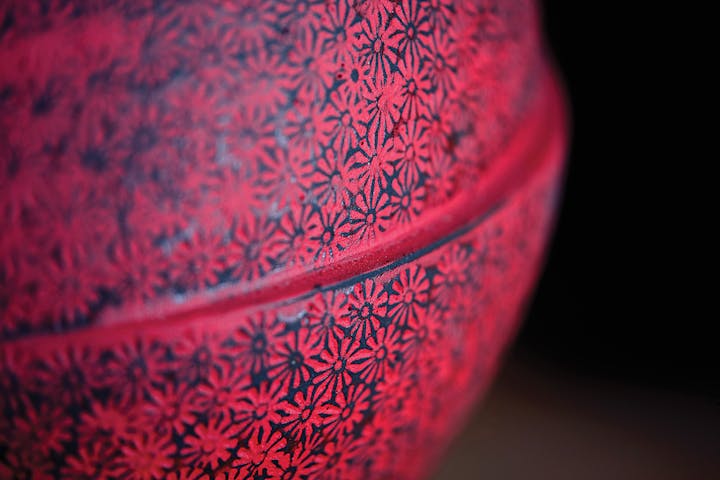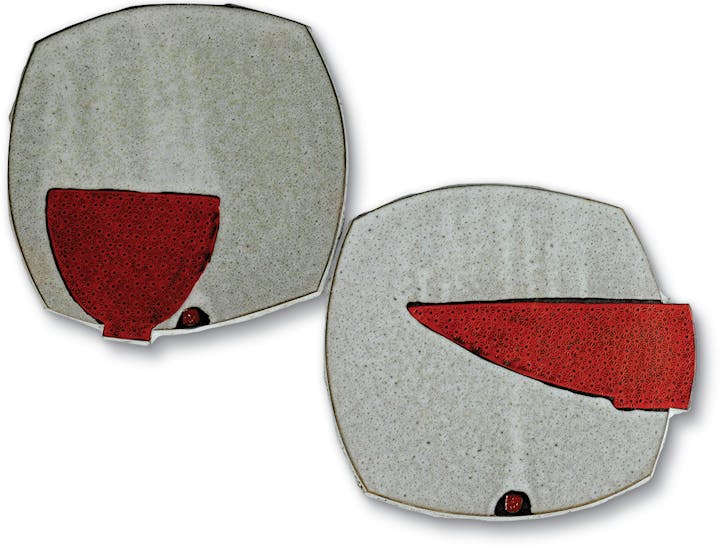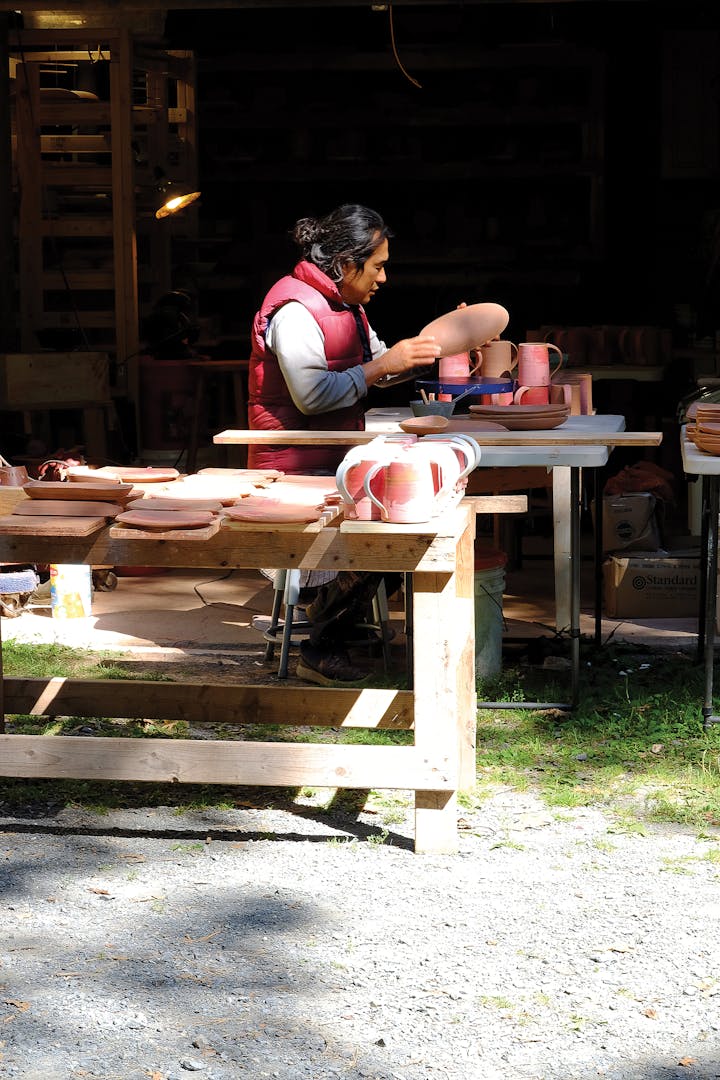The Gifts in Making: Sang Joon Park
The Gifts in Making: Sang Joon Park
↑ Born in Dae Jeon, South Korea, Sang Joon Park is a ceramist living and working in upstate New York.
Photo: Courtesy of Sang Joon Park
The Joy of Making and Use
Sang Joon Park understands the gifts that a maker can receive from the circumstances of his birth. He comes from a pottery family, and as a student in his native South Korea, he was an apprentice to one of his uncles, a traditional potter, for three years following his graduation from Mok Won University. Working in a busy studio as part of a team, he helped produce ceramics for export to Japan.
“The influence of my family probably helped me become who I am,” he says. “In Korea, I used to work 12 hours a day, for at least six days a week. The conditions were hard, but I always enjoyed it and never considered myself unfortunate or unhappy. I learned a great deal and grew in appreciation of the work I was doing. This became a foundation – it’s sustained me as a potter no matter what difficult situations I might run into.”
Different people had different responsibilities in the studio: One person was in charge of mixing clay, another was in charge of glazing and kiln firing, and another focused on drawing patterns. Park’s favorite form of traditional Korean pottery is buncheong ware, which dates to the 14th century. Unlike white porcelain and celadon – the other two main types – buncheong wares are decorated with a white slip over which a pattern is painted with an iron pigment. As an apprentice, Park was often in charge of shaping forms and selecting glaze colors.
Park came to the United States to study ceramics in the MFA program at Pratt Institute in New York. There, his advisor came from a sculpture background rather than a studio pottery background, which meant that Park needed to learn to communicate across a kind of artistic divide. And that effort turned out to be a major gift – it gave his work an entirely new direction.
“He had no knowledge of Asian ceramics,” Park says, “but we talked a lot about conceptual art, minimalism, and installation work. Thanks to the influence of my sculpture teacher, my perspective on the work changed. I decided to focus more on the development of concepts in my work. I am no longer tied to the shape, line, and glaze of the work.”
Though he gave serious thought to minimalism and conceptual art while in graduate school, Park is ultimately happiest making things that people can use and give. “I like to make bowls that are used in life,” he says, noting that the joy of making them is connected to the joy of using them.
Throughout the year, he participates in numerous craft shows where he sells functional wares. They’re decorated in the traditional buncheong he favors, as well as a technique called gwiyal, in which a large brush stroke of white slip is applied to each piece, a gesture he says is “reminiscent of painting.” He also uses inhwamun, a technique in which the surface of the clay is stamped, creating an overall pattern. Park collaborates with his wife, Min Ju Kim, to complete the work. Using a small, flower-shaped stamp and an inlay technique, she applies traditional inhwamun decoration to the pots he throws on the wheel.
Sometimes, Park lets nature apply the patterns. Having moved to upstate New York recently with his wife, two children, and two dogs, he has a studio space at his home surrounded by trees that gives him inspiration year-round. “I am so happy to live in the forest, and I wanted to express the beautiful changes of the season with my bowls, but there is a limit to how much can be expressed in the color of the glaze or painting on the bowl from the wheel.”
To forge a deeper connection with nature in his process, he thought back to the installation art he learned about in graduate school and experimented with an installation project of his own. “I started experimenting with developing sculptural forms by stacking and hanging them, destroying the perfect wheel-thrown forms, and arranging them to make abstract compositions,” Park says. “My latest piece, titled New York Fall, was created by leaving hundreds of wheel-thrown bowls outside. They changed and weathered over time, reflecting their natural environment and seasonal change that surrounded them.”
Park says his studio practice its requires a lot of patience. But, he adds, “When I throw on the wheel, it’s a time for me to organize and renew my mind.”
“I am so happy to live in the forest, and I wanted to express the beautiful changes of the season with my bowls.”
~Sang Joon Park
Park uses wheel-thrown, stoneware clay with red slip for the ceramics that Min Ju Kim decorates with inhwamun patterns.
Photo: Courtesy of Sang Joon Park
What do you think of Sang Joon's work?
We'd love to hear from you. Send your reactions, reflections, questions, and concerns to [email protected].
We need your help to share artists' stories
As a national nonprofit, the American Craft Council relies on the support of our community to elevate artists from across the country. Please join to today to help make our work possible.
